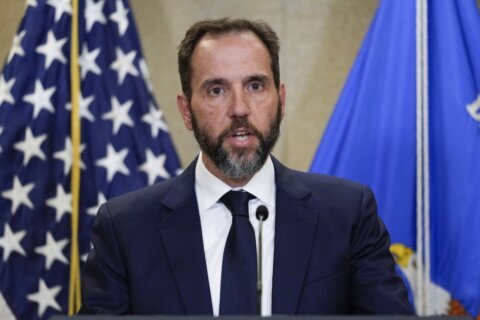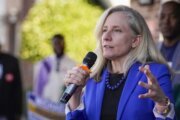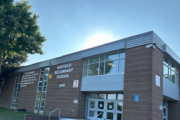Two years into the pandemic, public schools are struggling to help students recover from the extensive academic disruptions caused by COVID-19. While many students are lagging academically, suffering from what some educators call “unfinished learning,” experts say there are steps teachers and parents can take to help kids catch up, and to minimize the impact on the rest of their academic journey.
“We should all feel an extreme sense of urgency around getting kids back on academic track,” says Dan Goldhaber, director of the Center for Analysis of Longitudinal Data in Education Research at the American Institutes for Research. “Not everybody is off track, but the great majority of kids are behind where they would have been had we not had a pandemic.”
Though some have used the term “COVID learning loss,” most students did not actually slide backward in their learning during the pandemic. But research shows the majority did not make the gains expected in a typical year, and that achievement gaps have widened.
Students at high-poverty schools experienced the biggest setbacks, which have continued in the past year, says Megan Kuhfeld, a senior research scientist at the Collaborative for Student Growth at NWEA.
An analysis by the consulting group McKinsey & Company found that, on average, students finished the 2020-21 school year five months behind in math and four months behind in reading — but at low-income schools, those gaps grew to seven months in math and six months in reading. Students at schools where a majority of students are Black or Hispanic also fell further behind, by six months in both math and reading for majority-Black schools and six months in math and five in reading for majority-Hispanic schools.
“Differences in the impact of the pandemic have not been equal,” Kuhfeld says. “It’s exacerbated existing inequalities in terms of schools that had resources and schools that didn’t have resources before the pandemic.”
The long-term effect could be costly: This generation of students risks losing $17 trillion in lifetime earnings, or about 14 percent of today’s global GDP, as a result of COVID-19-related school closures, according to a recent report from the World Bank, UNESCO and UNICEF.
[READ: Schools Confront Continued Mental Health Needs.]
How Schools Are Responding
School disruptions have continued into the 2021-22 academic year, as the omicron variant’s surge prompted more school closures and quarantines. And some early evidence suggests that students have continued to lose academic ground as a result, says Bree Dusseault, principal at the Center for Reinventing Public Education.
In response, schools are adding time to the school day and year, offering high-dosage tutoring, using data to identify student needs, and using small group instruction, says Dusseault. Almost all districts contacted for a CRPE survey in fall 2021 were engaging in at least one of those strategies, and 21% were using all four.
In Tennessee, over the next three years, 150,000 students will receive high-dosage tutoring, which means frequent tutoring sessions with high-quality instructors, Penny Schwinn, commissioner of education for Tennessee, recently told an Education Writers Association webinar. The state is teaming up with community partners to offer micro-grants to low-income families, allowing them to select from a range of tutors.
“It’s a massive program,” Schwinn says. Tennessee is also expanding summer and after-school programming, and ensuring that the additional learning connects to the regular classroom by using the same high-quality curricula and instructional materials, she says.
Other schools are using federal relief funds to hire more teachers. Dayton Public Schools, for example, hired 96 additional teachers for reading and math instruction in grades 1 through 3, according to the Dayton Daily News, allowing two teachers to serve each classroom.
“Due to the reduced class size, teachers can work with smaller groups of students, identify gaps in learning more quickly, and provide the individualized attention needed to close those gaps,” superintendent Elizabeth Lolli told the Daily News.
Another tool many districts are trying is “accelerated learning.” Rather than attempting to get through all the previous year’s content students missed, this approach involves teaching grade-level content and providing support as needed. The strategy requires coordination across teaching teams, and can involve tutoring and other interventions, Jamila Newman, a partner at TNTP, said at the EWA webinar.
“COVID academic recovery is going to be a multi-year process,” says Goldhaber. “Schools need to try to understand which initiatives are working well and which ones are not.”
Helping students catch up is a priority for districts, Dusseault says. But “it’s not clear that all districts have a comprehensive robust strategy that’s steered at the district level. Schools are likely doing a lot of this individually on their own.”
[READ: How to Find a Tutor for Your Child.]
What Parents Can Do
While schools face the monumental challenge of making up for months of unfinished learning, parents have a role to play at home as well. “Parents should try as much as possible to be both engaged with their kids’ schooling and to help their kids get reengaged with school,” says Goldhaber.
Michael Tenney, a high school teacher from Houston, Texas, and a father of three, says students have all missed some milestones, and this may cause academic and social challenges. “Resilient kids will be fine. Parents with kids a little less resilient really need to pay attention as we enter the recovery stage of COVID,” he says, encouraging parents to watch for struggles in courses like math and science, where content builds on previous learning.
“Students may not have the necessary skills to learn concepts considered ‘age-appropriate’ a few years ago,” he says. “This may be a great time to look for tutors.”
Of course, not everyone has the resources for private tutoring. One of the most important things parents can do is communicate with teachers to find out how their children are doing, what supports they need and what school resources are available.
Michael J. Petrilli, president of the Thomas B. Fordham Institute, a nonprofit education policy think tank, advises parents to hold schools accountable for their responsibility to help kids catch up. “We know that our school system doesn’t always do what it needs to do, and that the squeaky wheel gets the grease,” he says. “Parents should not be bashful about pushing their principal or teachers.”
That attention and communication should also extend to your child’s social-emotional well-being, says Kuhfeld. “It is important for parents to really be monitoring for disengagement and mental health issues as well,” she says. “And make sure that students are receiving additional help (with) social, emotional and mental health needs because we know that many kids are struggling to get motivated to go to school.”
Indeed, for some parents, academics are taking a back seat to helping kids recover socially and emotionally.
“As a parent, I am not currently concerned about learning loss or academic performance,” says Jillian Amodio, a mom from Annapolis, Maryland, whose children are 7 and 10. “Our children have already lost so much these past two years. They’ve lost time with friends; they have lost freedom; they have lost security; they have lost the carefree tone of childhood; they have lost time in the classroom; they have lost time with family; and some have even lost loved ones.”
While education is crucial, children cannot learn in a traumatic environment or in a fear-based mindset, Amodio says, and she is focusing on her kids’ social and emotional well-being for now. “What gives me hope,” she says,”is that the teachers are excited to have the kids back in the classroom.”
More from U.S. News
How to Improve Reading Skills in the Early Grades
What Do Kids Learn in Kindergarten?
Taking a Break From School Stress
Helping Students Catch Up on Unfinished Learning originally appeared on usnews.com







